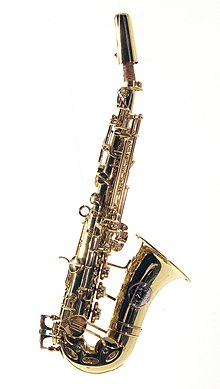Introduction to the Sopranino Saxophone
The sopranino saxophone may not be the most common member of the saxophone family, but it certainly packs a punch. This smaller and higher-pitched instrument has a unique charm that captivates both musicians and listeners alike.
If you’re curious about this quirky woodwind or looking to expand your musical repertoire, you’ve come to the right place! Whether you’re an absolute beginner or someone with some experience in other instruments, learning how to play the sopranino saxophone can be an exciting journey filled with creativity and expression. Let’s dive into everything you need to know about playing this enchanting instrument!
Understanding the Instrument: Key Differences from Other Saxophones
The sopranino saxophone stands out in the family of saxophones due to its higher pitch. This instrument is often tuned to E-flat, making it a full octave above the alto sax. Its bright and piercing sound can easily cut through an ensemble.
Another notable difference lies in its size. The sopranino is compact and lightweight, which makes it more manageable for younger players or those with smaller hands. However, this reduced size also poses unique challenges when it comes to finger placements.
Additionally, the mouthpiece design differs from larger models like the tenor or baritone saxophones. The smaller mouthpiece requires precise embouchure control but rewards skilled players with a distinctively vibrant tone that’s hard to replicate elsewhere.
These variations make learning the sopranino both exciting and demanding compared to other members of the saxophone family.
Choosing the Right Sopranino Saxophone for You
Choosing the right sopranino saxophone can feel overwhelming, especially with so many options available. Start by considering your budget. Quality instruments vary greatly in price, so set a realistic range.
Next, think about the sound you desire. Different brands have distinct tonal qualities. Research various manufacturers and listen to recordings of their sopraninos to find one that resonates with you.
Weight and ergonomics are also important factors. A lighter instrument might be more comfortable for longer practice sessions but may sacrifice durability or sound quality.
If possible, test several models in person. Holding them allows you to gauge how each feels in your hands and whether they suit your playing style.
Consider seeking advice from experienced players or teachers who can provide insights based on their firsthand experiences with different models. Their recommendations could guide you toward making an informed decision tailored just for you.
Assembling and Maintaining Your Instrument
Assembling your sopranino saxophone can feel daunting at first, but with practice, it becomes a breeze. Start by gently connecting the neck to the body. Make sure everything fits snugly without forcing any parts together.
Next, attach the mouthpiece carefully. Align it properly for optimal airflow and comfort during play. A slight twist may be necessary to secure it in place.
Maintenance is equally essential for longevity. Regularly clean your instrument after each use using a soft cloth to wipe off moisture from the body and keys. Invest in a cleaning swab specifically designed for saxophones; this helps remove debris inside.
Check pads frequently as they wear out over time; look for signs of leaks or damage. Keeping everything in top shape will enhance sound quality and playability while ensuring you enjoy every note on your sopranino saxophone!
Learning the Basics: Proper Posture, Hand Placement, and Breath Control
When you embark on your journey with the sopranino saxophone, mastering proper posture is vital. Stand or sit up straight to allow for better airflow. Keep your shoulders relaxed but not slouched.
Hand placement also plays a crucial role in sound production. Your fingers should rest lightly over the keys, ready to move fluidly as you play. Avoid pressing too hard; gentle pressure will help create a more resonant tone.
Breath control is another key component of playing effectively. Focus on deep breathing from your diaphragm rather than shallow chest breaths. This technique allows for consistent airflow and helps maintain steady notes.
Practice these fundamentals regularly. They lay the groundwork for your development as a musician, enhancing both comfort and performance quality on the sopranino saxophone.
Mastering Fingerings and Notes on the Sopranino Saxophone
Mastering fingerings and notes on the sopranino saxophone is essential for any beginner. The instrument’s smaller size presents unique challenges, but with practice, you can navigate them successfully.
Start by familiarizing yourself with the fingering chart specific to the sopranino. Each note corresponds to a distinct combination of finger placements. Regularly practicing these configurations will build muscle memory.
Use a metronome as you work through scales. This tool helps keep your timing steady and allows for gradual speed increases over time.
Listening closely to recordings can also be beneficial. Try to mimic both tone and dynamics from experienced players.
Don’t rush through progressions; take your time with each note. Building precision now will pay off in smoother playing later on, making it easier to express your musical ideas effectively.
Tips for Improving Tone and Sound Quality
To enhance your tone on the sopranino saxophone, start by focusing on your embouchure. Ensure that your lips are firm yet flexible. The correct pressure helps in producing a clear sound.
Breath control plays a pivotal role as well. Diaphragmatic breathing provides consistent airflow, allowing for richer tones. Practice taking deep breaths and releasing them steadily while playing.
Experimenting with different reeds can also lead to significant improvements. Each reed has unique characteristics affecting sound quality. Try various strengths until you find one that complements your style.
Regular practice of long tones is essential too. This exercise develops both endurance and smoothness in sound production.
Listen to accomplished sopranino players for inspiration. Analyzing their techniques can offer new insights into achieving that desirable tone you aim for.
Common Challenges and How to
Playing the sopranino saxophone can come with its own set of challenges. As a beginner, you might encounter some hurdles that may seem daunting at first.
One common challenge is mastering breath control. The sopranino saxophone requires precise airflow due to its smaller size and higher pitch. Practice long tones and scales to build your lung capacity gradually. This will help you develop better control over your breath while playing.
Another issue many beginners face is finger coordination. The intricate keywork of the sopranino may feel overwhelming initially. Start slowly by practicing simple exercises, focusing on one hand at a time before combining them together. Consistent practice will eventually lead to improved dexterity.
Tone production can also be tricky for new players. It’s essential to experiment with mouthpiece placement and embouchure until you find what works best for you. Listening closely to professional recordings can provide insight into achieving a cleaner sound.
Don’t forget about maintenance! Keeping your instrument clean and well-tuned is crucial for producing quality sounds consistently. Regularly swab out moisture after playing, check pads for leaks, and consult a technician if needed.
Embrace these challenges as part of your musical journey with the sopranino saxophone; overcoming them will only enhance your skills further down the line.





